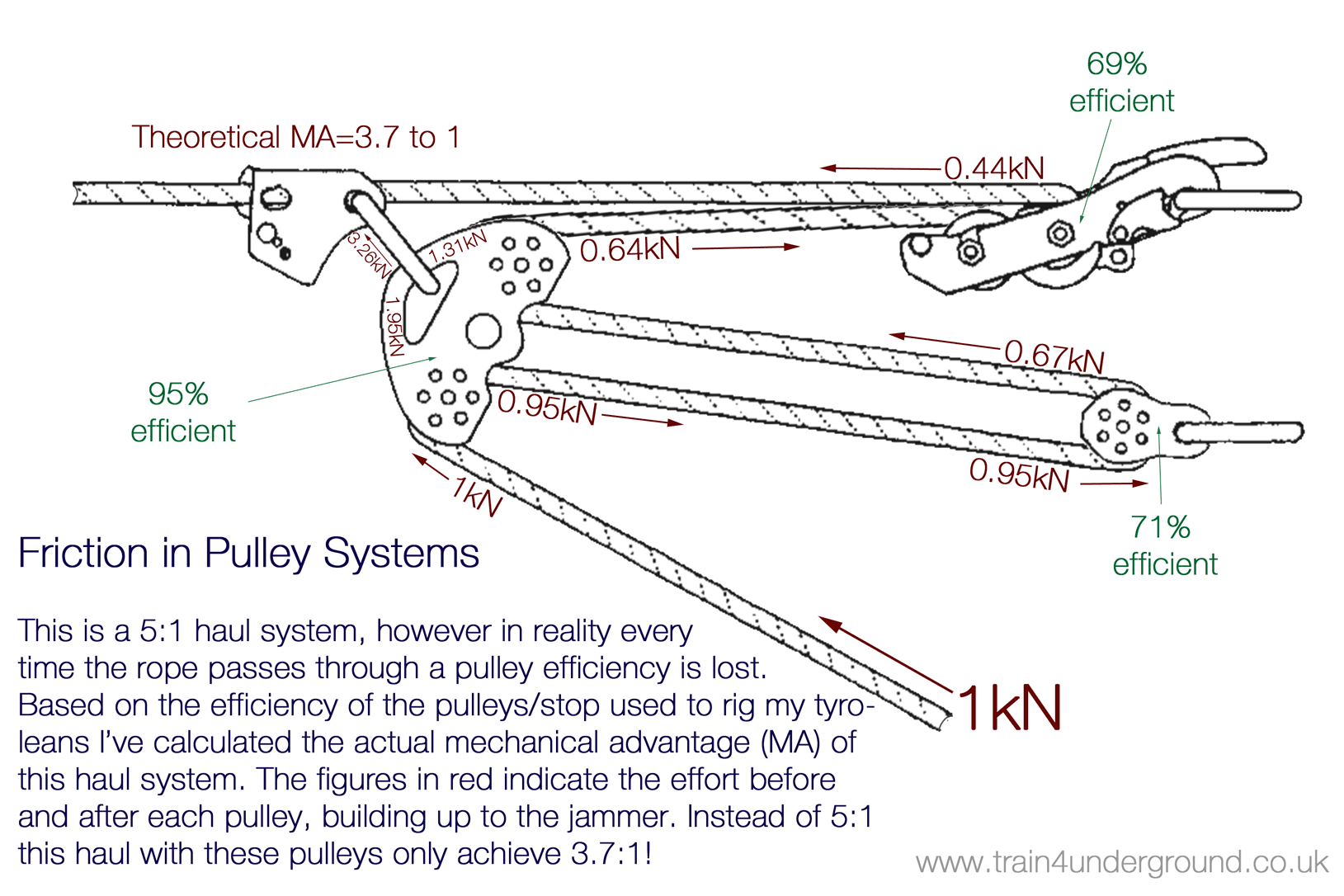I’ve complied some more data on a fixed tyrolean/zip line I use with groups, and will try and add more as opportunities arise. The zip line is around 20m long, descending at around 40º with a back rope belay to slow students down. Both sets of tests were rigged using the same kit, and both tensioned with a 5:1 haul and 2 adults tensioning as much as possible by hand.
Click here to download the spreadsheet.
One of the things I’ve looked at here is how much effort is probably lost in that 5:1 haul system based on the friction of the various devices used, so included in the data for the tests is some other brief work I’ve done looking at the different amount of friction of various pulleys and rope capture devices/belay devices which could (or probably should not!) be used to help rig a tyrolean. These loads were achieved using a Petzl Tandem Speed (95% efficient pulley according to the manufacturer) and a Oscillante (71% efficient) as well as the single capstan of a STOP. The tail of the rope coming out of the stop was then secured to the anchors to allow a small amount of slip through the STOP if the tyrolean was overloaded.
One thing that’s apparent with both samples is how the tension in the rope is significantly reduced after the first person (in both sessions an adult went down first, followed by significantly smaller primary school students), in July a 0.41kN (thats around 41kg in load) and a 0.53kN reduction in Oct after the adult went down the tyrolean. Compare that to a reduction of 0.15kN between the second and the 10th person in July and a 0.06kN reduction between the second and 6th person (nice small group that week!) in October. It seams to me that the first person down stretches the rope, possibly rotates slings and cinches up knots reducing the tension of the rope and in doing so reduces the loads on anchors etc. Throughout both sessions the tension in the rope didn’t really exceed that achieved in a top roping climbing session (if you’re using a semi-static rope to rig a top rope that knot is going to be subjected to twice the weight/load of a climber), however this was a descending traverse so less prone to people bouncing around in the middle etc.

